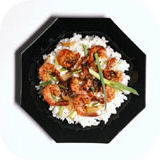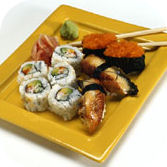 Pureeing, blending, and grinding...believe it or not, preparing baby food is easier than it sounds. Many parents find it to be a very satisfying and economical experience. However, making baby food requires extra care to keep it safe and nutritionally superior. Follow these 5 simple steps, and you'll be ready to go!
Pureeing, blending, and grinding...believe it or not, preparing baby food is easier than it sounds. Many parents find it to be a very satisfying and economical experience. However, making baby food requires extra care to keep it safe and nutritionally superior. Follow these 5 simple steps, and you'll be ready to go!
1. Make sure your kitchen is clean & safe.
- Cleanliness is a MUST. Babies are especially susceptible to digestive upsets, so wash your hands well with soap and water. Thoroughly clean all counter surfaces, cutting boards, utensils, cookware, and storage containers as well.
- Wash all fruits and vegetables before you begin preparation.
2. Make nutritious food choices.
- For vegetable options, select fresh, canned, or frozen. Select no-salt varieties of canned vegetables. If you do use regular canned vegetables, place them in a colander, drain the liquid, then rinse under tap water for 1 minute to reduce the salt content.
- For fruit options, select fresh, frozen, or canned fruits. Buy fruits that are canned in their own juices, or drain and rinse those packed in heavy syrup to remove the excess sugar.
- For protein options, select lean beef, pork, poultry, turkey, fish and seafood, eggs, tofu, and cooked beans, peas and lentils.
- For grain options, select whole grains such as brown rice, oatmeal, quinoa, and whole wheat pasta.
3. Prep and cook.
- Wash, peel and remove seeds or pits from produce.
- Cook frozen and raw produce until tender on the stovetop, in the microwave, or by using a steamer. Whichever method you choose, add only a small amount of water. This will help your foods retain more vitamins and minerals.
- Use a quick-read, food thermometer to cook meats, poultry, fish, and egg dishes to the correct temperature.
- Do NOT add extra salt, sugar, honey, or corn syrup.
4. Prepare foods with a texture appropriate for your baby's feeding stage.
- Pureed & Ground Foods: Puree foods in a food processor, blender, or baby food grinder, or simply mash them with a fork. Add additional water, juice, formula, or breast milk to soften the consistency of the pureed food.
- Chopped Finger Foods: Older infants will enjoy feeding themselves bite-sized foods, once they master a "pincer grasp". Many adult foods, such as canned fruits, cooked vegetables, banana slices, bread, crackers, cheese, tender-chopped meat, and dry cereals can be served this way. Avoid hard, round foods, which can cause choking.
5. Store and use foods in a timely manner.
Continued ›
|
 Pureeing, blending, and grinding...believe it or not, preparing baby food is easier than it sounds. Many parents find it to be a very satisfying and economical experience. However, making baby food requires extra care to keep it safe and nutritionally superior. Follow these 5 simple steps, and you'll be ready to go!
Pureeing, blending, and grinding...believe it or not, preparing baby food is easier than it sounds. Many parents find it to be a very satisfying and economical experience. However, making baby food requires extra care to keep it safe and nutritionally superior. Follow these 5 simple steps, and you'll be ready to go! 





Member Comments